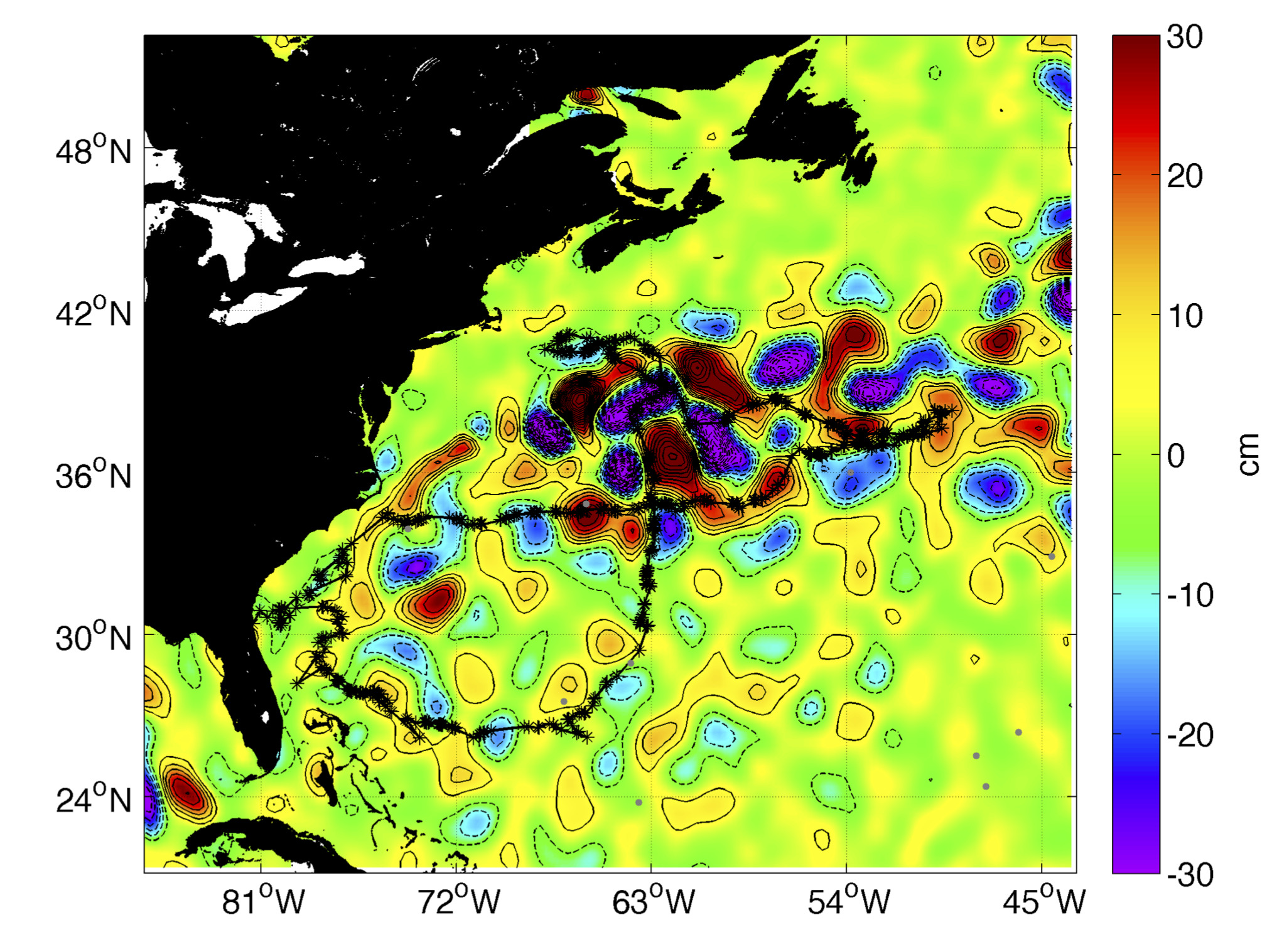← Back
White sharks in eddies and meanders

Top predators play a key role in maintaining the health of open ocean ecosystems. Understanding how they relate to their environment is fundamental in order to monitor their populations and the state of the marine environment. White sharks, among others, have been tracked using Argos satellite telemetry, and their path compared with ocean eddies and meanders to study where they can feed in not-so-rich areas of the ocean.
How white sharks navigate with respect to ocean features
White sharks (Carcharodon carcharias) are among the top predators of the ocean (“Jaws”, in the movie, is supposed to be a white shark – albeit a gigantic one). Such a predator is often detected in the open ocean. There, phytoplankton, considered as the base of the food chain, is rather scarce, and mostly concentrated in eddies or meanders. These structures, about 50 to 200 km wide, are also known as “mesoscale” features to physical oceanographers.
More info about marine animals tracking
Diving patterns
Two white sharks were fitted with surface Argos position tags, so as to have precise locations that made it possible to co-locate them with mesoscale features with sufficient accuracy. One of them also had a pop-up archival tag recording diving behavior allowing to link different diving patterns to different locations. Both sharks were located preferentially within eddies and meanders. In particular, they spent more time in the core of “anticyclonic” eddies (warmer than the surrounding ocean) than in their reverse version (colder). The double-tagged shark also showed a different diving behavior in the two kind of eddies, diving at 1000 m- 200 m (known as the “mesopelagic” or “twilight zone”) around the time of sunrise and sunset in the anticyclonic eddies more often. These patterns could be linked with the higher energetical need energy to regulate body temperature in a colder surrounding.
Protective measures
This type of knowledge can be used to better understand the behavior of animals, prioritize regions of the ocean that are particularly important for their foraging behavior, inform models and policies to design sustainable fishery policies and effective marine protected areas.

One of the sharks’ track overlaid on sea surface height anomalies from altimetry satellites (Credits Applied Physics Laboratory, University of Washington) (note that such maps can now be plotted for the last year using the “Met-Ocean” feature on Argos web).
Photo: One of the tagged white shark (Credits OCEARCH)
References
- Peter Gaube, Camrin D. Braun, Gareth L. Lawson, Dennis J. McGillicuddy Jr, Alice Della Penna, Gregory B. Skomal, Chris Fischer & Simon R. Thorrold, 2018: Mesoscale eddies influence the movements of mature female white sharks in the Gulf Stream and Sargasso Sea, https://doi.org/10.1038/s41598-018-25565-8
Links
- The Use of Eddies by White Sharks
- Sharks in eddies and meanders (an altimetry point of view)
- Mesopelagic Prey and Predators: tracking a white shark in a mesoscale dynamic ocean
- National Geographic news
- OCEARCH

